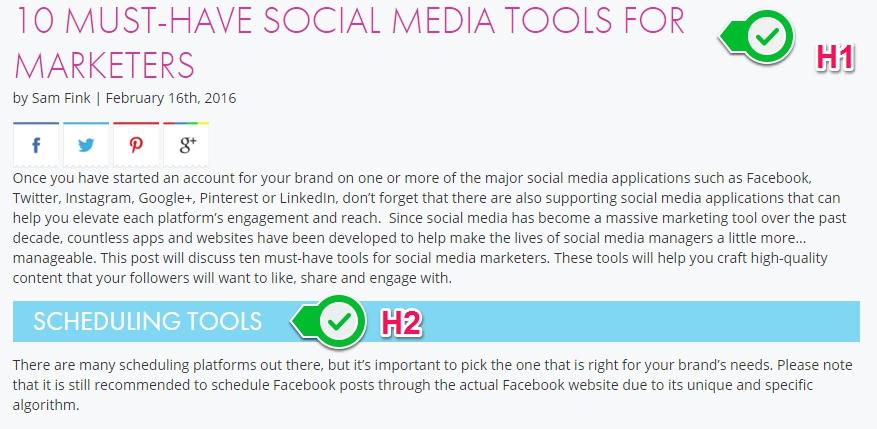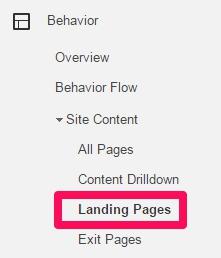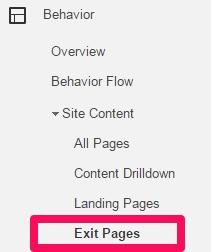KISSmetrics: 5 Killer Conversion Optimization Techniques That Improve Your Rankings
KISSmetrics: 5 Killer Conversion Optimization Techniques That Improve Your Rankings |
| 5 Killer Conversion Optimization Techniques That Improve Your Rankings Posted: 23 Mar 2016 10:19 AM PDT Conversion optimization and SEO have a rather symbiotic relationship — they rely on each other in order to function. Just as no salesperson can perform their job without a steady flow of customers in their store, no call-to-action can drive conversions without traffic coming to the website. On the other hand, what good are droves of customers if you don't have an effective strategy to influence them into making a conversion? Leveraging SEO and conversion optimization offer a balanced approach to your marketing strategy, addressing both sides of the equation. Even if your company primarily invests in PPC to reach its target traffic, ignoring the organic side of search is a mistake — don't lose out on an opportunity for new customers. Whether you're developing new content or simply want to revamp your existing landings pages, these tried and true conversion optimization techniques can improve your performance in organic search over time. 1. Limit Your ScopeGoogle loves websites that provide immediate answers. The first page of search results is loaded with pages considered most efficient in terms of answering your search query. While it's tempting to optimize pages for a broad audience in order to attract more visitors, this approach often creates a poor user experience. Addressing a wide range of topics all but guarantees your audience will need to dig for the information they need. Landing pages that speak to everyone speak to no one in particular. Sharpening your focus is a top-down process that starts with the structure of your website. If you're not familiar with the concept of SEO silos, it's time to read up. How you organize your pages directly impacts how search engines crawl your site and users find the information they need. So-called 'silos' give your content a natural place to exist within your site. With a well-defined site architecture in place, your next task is ensuring the content of your landing pages remains highly focused. Segment variations of your central theme using a clear header hierarchy and tie in a strong call-to-action that speaks to the specific reader.  The difference can be dramatic to your organic performance and overall conversion rate. 2. Create Content That ConvertsA website's content is arguably the most important factor influencing conversion rates. It also plays an integral role in how your individual pages perform in organic search. Great marketing content has the ability to seamlessly blend conversion opportunities. Take a look at the example below for instance:  There's a few things to keep in mind when developing new content to ensure you're getting the most out of it in regards to conversions and SEO. First and foremost, your content should be designed for human audiences. While it's important to include keywords from an SEO standpoint, you quickly turn off readers with content designed for search engines that's overloaded with terms. Remember, too many cooks in the kitchen can spoil the broth. In finding keywords to optimize your content, don't fixate on volume. Keywords with less volume but obvious intent behind them are worth far more. Think discount running shoes vs. shoes — which is more likely to lead to a conversion? Craft your content with clarity and conversion in mind. Write with a sense of urgency and utilize strong calls-to-action throughout that compliment the natural thought process.  The above example from Kissmetrics does a great job simplifying the benefit of the service and prompts the reader to make a conversion. Keeping this content clean and concise makes it easy for your audience to absorb the value proposition and large call-to-action buttons influences their next move. 3. Rely On VisualsNothing encourages a visitor to flee your site faster than encountering a massive wall of text. Breaking up content with visual elements can help make your content more digestible and keeping your audience engaged could ultimately make the difference in terms of creating a new conversion. While incorporating images can dramatically improve readability and decrease your bounce rate, they must also serve a purpose. Always keep these elements highly relevant. Determine whether a portion of your content is better served presented as an image. Mine your analytics for landing pages with higher bounce rates and see what opportunities are present to enhance the count with visuals.  Apart from better engaging your audience, images also affect the SEO value of your page. Be sure to optimize your images using file names, alt text, and appropriate captions. 4. Flash ForwardDoes your website utilize heavy amounts of Flash? If so, you're living in the past. Once a cornerstone of the web, Flash has long since been labeled an outdated technology. Originally developed with a mouse and keyboard in mind, today's internet users have evolved beyond traditional desktop computers — over half of all internet searches now attributed to mobile devices. Modern web design has moved away from Flash, citing it as major hindrance in terms of accessibility. Flash hampers mobile and tablet users from accessing your full site; similarly, search engines can't crawl Flash elements of your site, negatively impacting your overall optimization. While having a few Flash elements won't hamstring your site completely, it's a major accessibility issue to address if it affects the way users navigate or interact with your content. Beyond improving the accessibility of your site, stripping Flash elements can dramatically improve loading times. Faster loading times also give your site an edge in relation to how Google ranks your site. The bottom line is you want to ditch Flash altogether to create the best user experience and improve your organic search performance — start preparing an exit strategy with your developers. HTML 5 is the best alternative to Flash and other outdated third party media players. Simple in both form and function, this developer-friendly format ensures your video and audio files are accessible to users across all devices. 5. Perform Regular TestingIt's nearly impossible to improve your conversion rate without setting a benchmark. Routine testing allows you to monitor your performance and inform your overall marketing strategies going forward. If you're just getting started with analytics, start simple. The first thing you'll typically want to identify is your top pages, easily identified through Google Analytics (Behavior → Site Content → Landing Pages).  Using your top pages as a benchmark, identify the areas of your site where people most commonly exit (Behavior → Site Content → Exit Pages). Is there anything these lower performing pages might be missing present in your top pages?  Additionally, there's a lot of intelligence related to your conversions to be gained from tracking goals in Google Analytics. Most importantly, you're able to identify the areas of your conversion funnel that might need the most attention. Use your data to make small improvements across your pages, making sure to monitor changes in traffic and user flow. Perform regular A/B testing to refine your strategies whenever possible. The Bottom LineConversion optimization and SEO are complementary forces designed to build an audience and guide their behavior. Utilizing these techniques can move your website in the right direction in terms of both. Remember, the benefits of a well optimized site don't appear overnight — you'll need to diligently test and revise your landing pages to see the difference to conversions and organic search performance. About the Author: Tyler Thursby is a Senior SEO Analyst for Zion & Zion, a leading advertising agency out of Phoenix, AZ. He's an accomplished writer who frequently blogs about content marketing, social media and analytics. Follow him on Twitter at @tthursb. |
| You are subscribed to email updates from The Kissmetrics Marketing Blog. To stop receiving these emails, you may unsubscribe now. | Email delivery powered by Google |
| Google Inc., 1600 Amphitheatre Parkway, Mountain View, CA 94043, United States | |